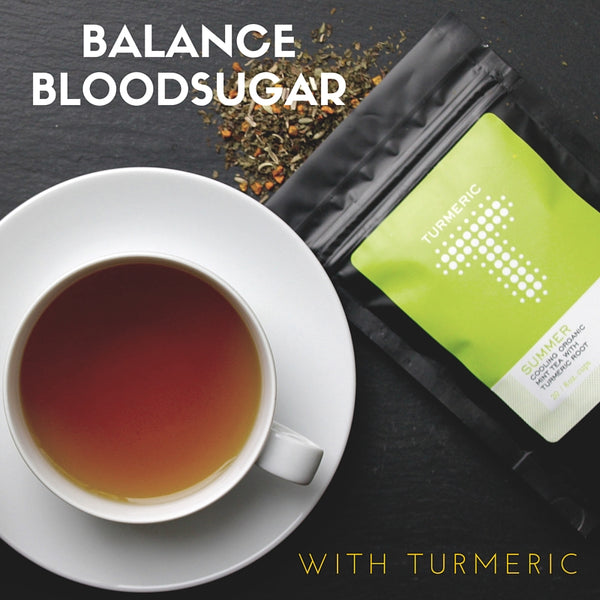

Often many people discover the hard way that a healthy diet and lifestyle could have prevented a disease. However, even with a health scare or diagnosis it’s never too late to start eating a wholesome diet, with plenty of dark green leafy vegetables. A perfect example of this is if you’ve been diagnosed with Type 2 diabetes. Like many people who receive Type 2 diabetes diagnosis it can be quite frightening and unexpected. Type 2 diabetes is when your pancreas does not produce enough insulin (a hormone that regulates blood sugar level by helping the body absorb and process sugar effectively) to maintain a normal glucose level. Type 2 diabetes is caused by various factors, most of which are in fact controllable (lifestyle and diet). A good step (but not the solution) that doctors often tell their patients with diabetes is to avoid sugar.
But there’s actually better advice, not only to manage type 2 diabetes, but quite possibly dramatically mitigate this disease. With some lifestyle and more importantly some dietary changes, most people can turn their blood glucose levels back to a normal range and no longer be dependent on insulin medication.
Below are a few natural, diet-based methods to help manage and reverse Type 2 Diabetes:
1) Nutrient rich diet - An essential and most effective way in treating and reversing type 2 diabetes is primarily through diet. Protein is the most satiating macronutrient and has the least minimal effect on blood glucose levels. Focus on a diet rich in Omega-3s (salmon, sardines, Brussels Sprouts) as we often consume way more Omega-6’s in our diet (grape seed, safflower, corn and sunflower oils). Omega-6’s is a contributing factor in diabetes due to its inflammatory effects. On the contrary, Omega-3’s help reduce inflammation and helps decrease insulin resistance. Dark green leafy vegetables are rich in vitamins, minerals antioxidants and fibre, which helps to improve blood-sugar levels and decreases your risk in developing other diseases. A wholesome, nutrient-dense diet with protein, healthy fats and green vegetables will help improve insulin function and sensitivity, prevent elevation in blood glucose levels after meals and provide optimal nutritional status.
2) Low GI Diet – What is the Glycemic Index? The Glycemic Index (GI) is a scale from 1-100 that ranks carbohydrate-rich foods by how quickly they raise and affect blood sugar levels and insulin. White rice, white bread, bagels, pasta (processed carbohydrates) are foods that significantly impact your blood sugar as they rank high on the GI. Your diet should primarily consist of foods on the low-GI that are ranked 55 or less, as it balances and stabilizes blood sugar level. Some examples of foods that are ranked low on the GI are asparagus, kale, broccoli, spinach, apple, garlic, almonds, legumes and quinoa. There are even some spices and herbs that are very low on the GI, such as cilantro, thyme, sage, ginger and turmeric.
3) Add turmeric to your diet – Turmeric does more than just fall into the ranking of low GI foods. Turmeric exhibits an anti-diabetic action by improving insulin resistance and reducing elevated blood sugar. It’s imperative for type 2 diabetics to incorporate turmeric in your diet regularly and be diligent with eating a low GI diet. Turmeric Tea Summer tea blend is a perfect organic loose-leaf blend for anyone trying to balance their blood sugar levels, as not only does it contain organic turmeric, but it also contains other blood sugar balancing organic herbs such as fennel, peppermint and black pepper. Stay away from diet-pop, fruit juices and even “health drinks”, as many of them can contain fortified fruit juice or artificial sweetener that will dramatically spike your blood sugar. Summer tea blend is a great beverage alternative, loaded with numerous health benefits that can be enjoyed at the end of a long day, as it is also caffeine free.
4) Reduce Stress – Stress elevates cortisol and can lead to hormone imbalance, insulin issues and increases risk for other types of illnesses and diseases. In fact, stress causes rapid fluctuations of blood sugar levels and decreases insulin sensitivity, which decreases the body's ability to absorb glucose (sugar). Reducing your stress hormone levels and getting a good night’s rest are essential for blood sugar balance.
5) Exercise daily & lose weight – Regular exercise helps improve your body's sensitivity to insulin and helps manage your blood glucose levels. It also helps to increase the body’s ability to efficiently use insulin and absorb glucose. Obesity and excess weight decreases insulin sensitivity and affects normal glucose metabolism.
Hippocrates, the father of modern medicine, said, "Let food be thy medicine, and medicine thy food."
Work directly with a Holistic Nutritionist and Naturopathic doctor to create a plan that can help you manage type 2 diabetes. Learn more about natural approaches for type 2 diabetes that include a healthy diet, superfoods for diabetes, nutritional supplements and exercise.
Alexandra Daugherty • Holistic Nutritionist
